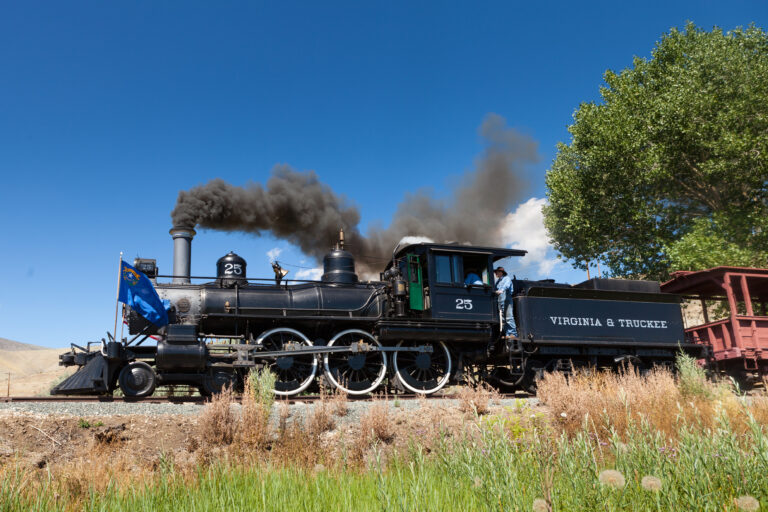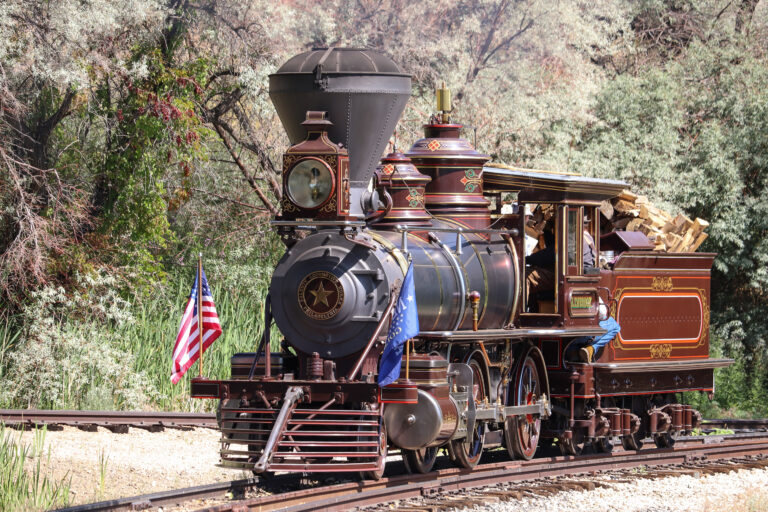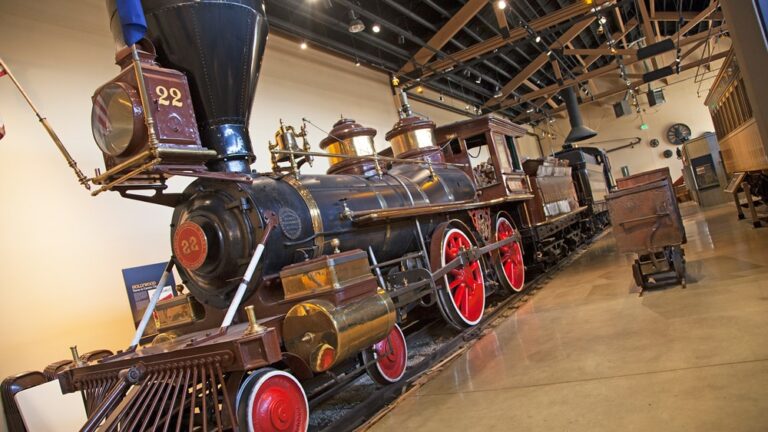The Transcontinental Railroad: What a Difference It Made

The completion of the transcontinental railroad in the spring of 1869 changed America forever, dramatically reducing the time and cost for people and goods to move across the country and accelerating the Western expansion of the Industrial Revolution.
The meeting of the Central Pacific Railroad from the west and Union Pacific Railroad from the east culminated May 10, 1869 with the driving of the ceremonial golden spike by Central Pacific President Leland Stanford. The car that carried Stanford, other Central Pacific officials, and the golden and silver spikes to the ceremony, was known as “The Commissioners’ Car.”
A few years after Promontory, it was sold to Nevada’s V&T Railroad for use between Reno, Virginia City and Carson City and in 1878, and converted to a passenger car known as “Coach 17.” It remained in operation for many years until hard financial times fell on the Comstock and the V&T. By 1937, the V&T sold much of its equipment to Hollywood film companies.
Coach 17 was used in a number of movies, including the 1924 John Ford film, “The Iron Horse,” a silent film telling the story of the building of the Transcontinental Railroad. Other included “Jesse James,” “Centennial Summer,” and the Elvis Presley movie “Love Me Tender.”
For many years, it sat on a movie lot outside Malibu, Calif. In 1972, it was sold to Short Line Enterprises for continued movie service. It was used in one of Kenny Rogers’ “Gambler” movies and made its final Hollywood appearance in Clint Eastwood’s “Pale Rider.”
In 1988, Coach 17 was purchased by the State of Nevada. Today, the car has been stabilized and is kept in a state of “arrested decay” where it serves as a time capsule of railroad history. It is the oldest piece of rolling stock in the museum’s collection. This exhibition will be the first time it has been displayed for the public.
The museum exhibit also features the V&T locomotives Inyo and Dayton, both of which have been used in film and exhibitions to portray the locomotives present at Promontory in 1869.



